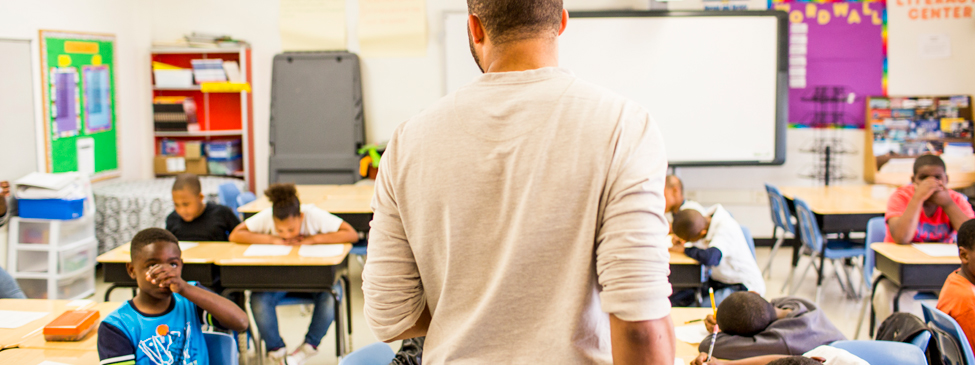When I saw the video footage of the incident at Spring Valley High School in South Carolina last week, I was horrified. I felt terrible for the student, who endured the kind of treatment reserved for hardened criminals. I felt angry at the police officer, whose blatant use of excessive force was unacceptable. But most of all, I couldn’t stop thinking about the teacher. He could have been me.
I used to teach at one of the lowest-ranked middle schools in North Carolina. Student behavior was a constant issue—so much so that substitute teachers often refused to show up. During the time I was there, more than a third of our students were suspended at some point in any given year.
Like many schools facing these kinds of challenges, we had a school security officer assigned to help us manage disciplinary issues when they got out of hand. I myself relied on him at times for everything from breaking up fights to removing a student from class. But in hindsight, he wasn’t always needed.
One day during my second year of teaching, I was on lunch duty when a student, whom I’ll call Aliyah, caused a disturbance in the cafeteria. I pulled her aside and decided to take her to the security officer. The officer was beloved by students because he often let them hide out in his room and get away from class. Although I wasn’t happy about that prospect, I thought he might give Aliyah space to calm down and allow me to get back to lunch duty.
When I dropped her off at the office, the officer began to lecture her. In response, she kicked a small wastebasket toward him. The officer reacted defensively and pulled out his mace, aimed at her face. Before he could use it, I threw myself between them and spread my arms wide to block him. The officer screamed at me to move. I screamed that I wouldn’t.
When I reflect on this incident, I am struck by how quickly it escalated. Yes, Aliyah was out of line, but her actions did not justify the aggression. She was just a teenager who acted out in a moment of frustration.
Acknowledging that Aliyah and her classmates are just students, just children, is too often missing from conversations about school discipline and incidents like Spring Valley. There’s a tendency to ask, “What did the student do before the video started rolling?” But there’s almost nothing a child could do that would ever justify spraying her with mace or hurling her toward a wall.
As teachers, and adults in the room, it’s our responsibility to discern which battles to fight with our students, and how. We have choices, often difficult ones: Do I make Hakeem redo this subpar work? Or do I encourage him for turning in something after three weeks of missing assignments? Do I attempt to keep Mark from walking out, or continue teaching 29 other students?
Judgment calls like these will never be easy—particularly for new teachers. But that’s not an excuse. It’s a testament to the fact that teachers need training and support to manage student behavior effectively without the involvement of the police. They need professional development on how to diffuse minor conflicts with students in ways that build relationships instead of escalating them to the level of the school resource officer. Doing so only sends an undeniable message to students: Your teacher has given up on you and turned you over to police custody. Our responsibility as educators is to send a different message.
As challenging as my school environment might have been, the vast majority of my students’ behavior infractions didn’t warrant police involvement. Most were the result of students being adolescents—testing boundaries and trying on new behaviors. That’s probably the case at most schools. It was certainly the case at Spring Valley.
A student of mine once said that school should be “a place that is safe for everyone and really almost like a second home.” The onus falls on us adults, not on our students, to find better ways to manage behavior, and to create that second home where everyone—teachers and students alike—feels safe and respected.




